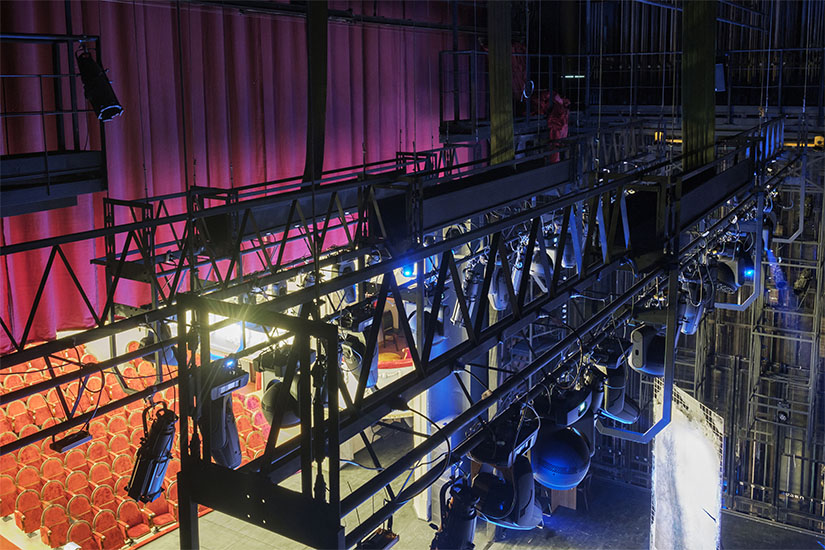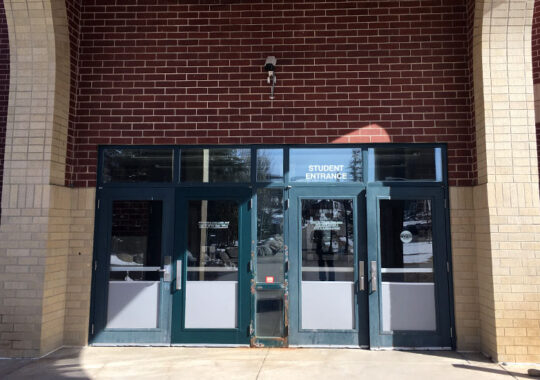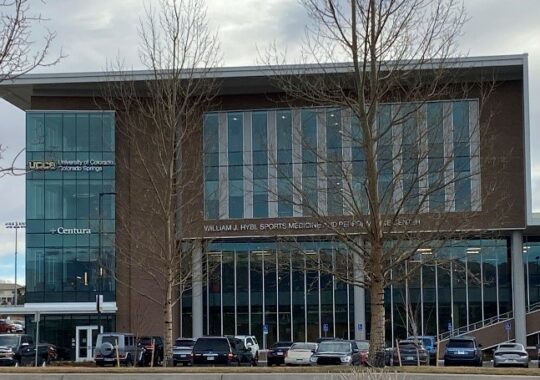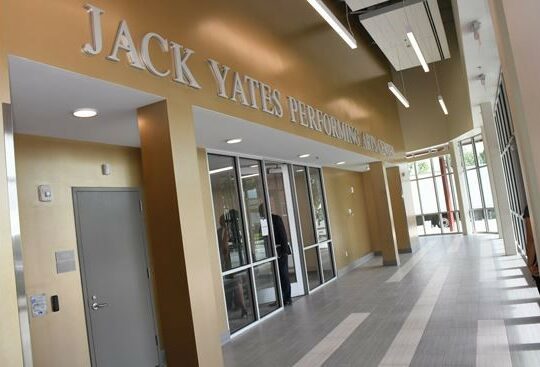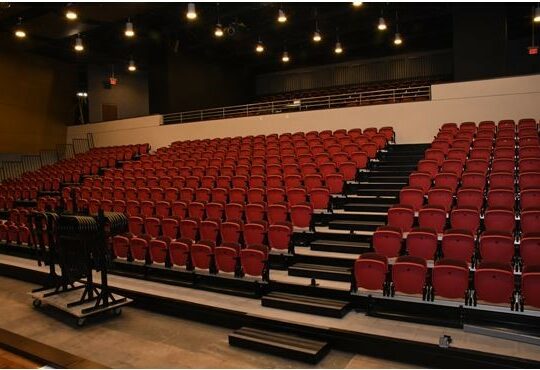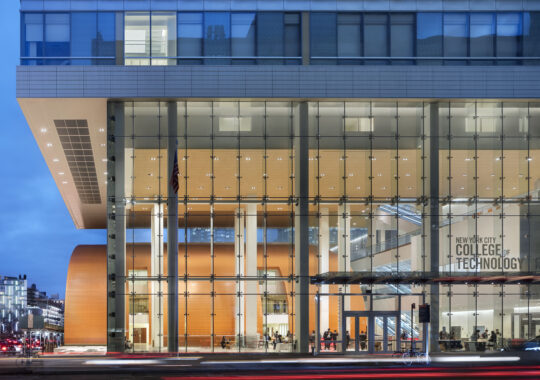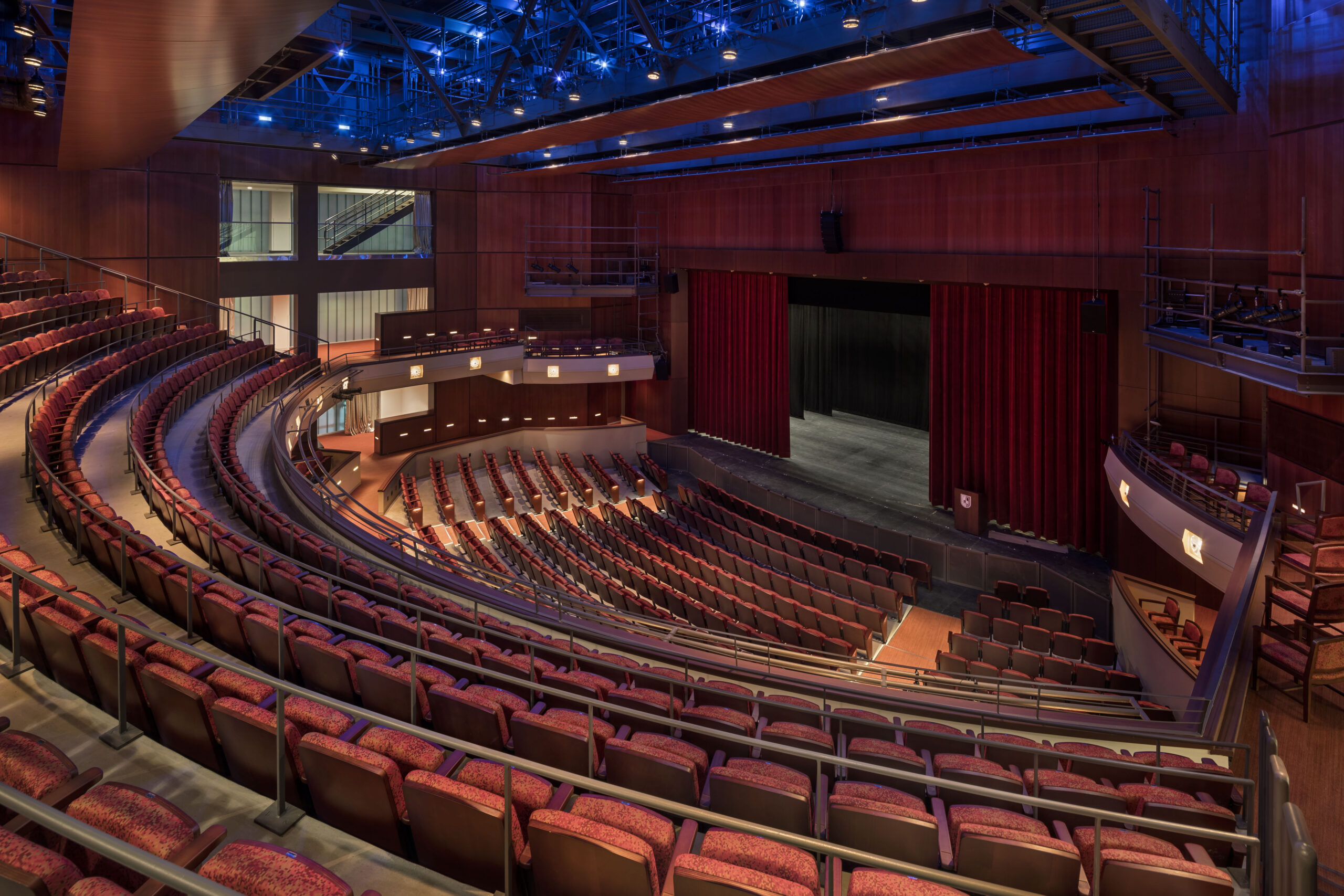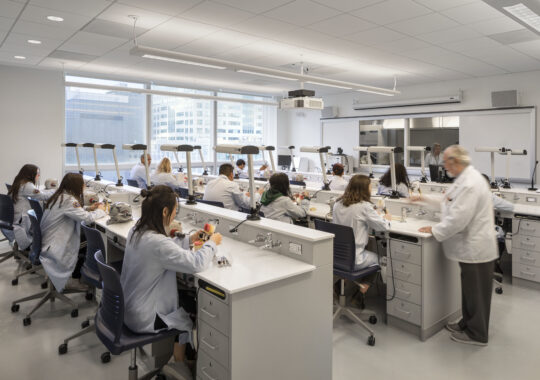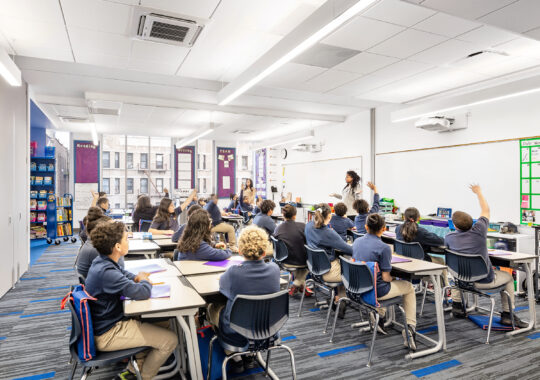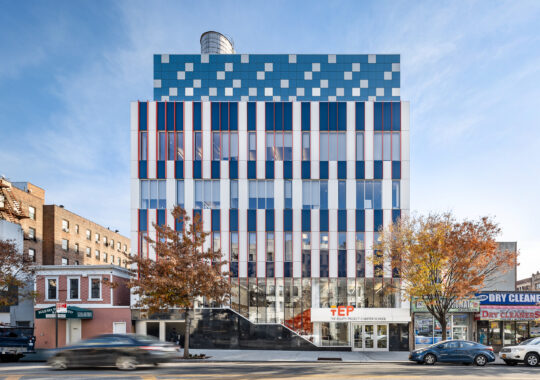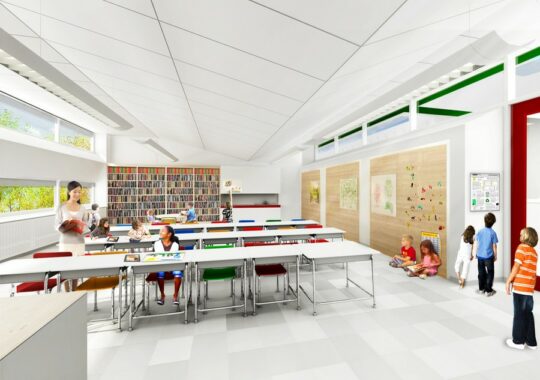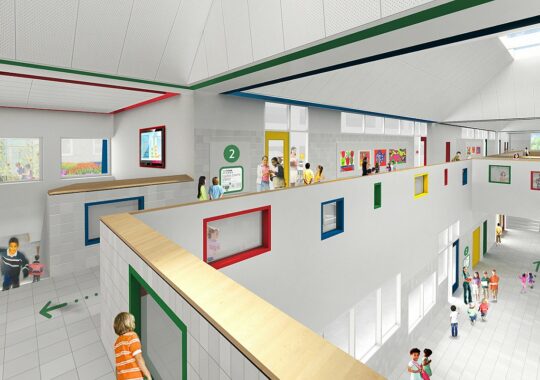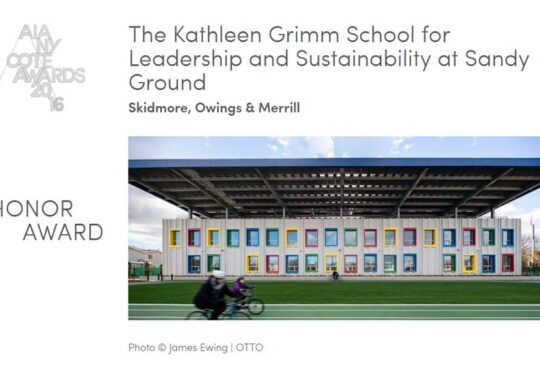LED lighting technologies are not new to the theater lighting industry, but recent developments have tipped the scales in favor of building and retrofitting K-12 performance spaces without conventional fixtures. It has been clear for several years that modern LED theatrical fixtures are on-par with conventional fixtures in terms of output and light quality for the size of theaters typically found in K-12 schools. While LED fixtures continue to have a cost premium over conventional incandescent fixtures, the gap has narrowed to the point where the benefits of LED outweigh the higher initial cost. One of those benefits that we consider when designing educational spaces is that it is important to give students who are interested in a career in performing arts access to equipment that will be used at the next level. Another advantage is the ability to control color mix electronically thus reducing the number of required fixtures.
The choice is harder for schools with large quantities of existing conventional fixtures. Switching to a primarily-LED system, however, does not preclude the use of existing fixtures. The most widely used conventional fixtures can be retrofitted with LED light engines. Older conventional fixtures are probably due for replacement, but if the budget is tight, portable dimmer packs compatible with LED infrastructure are widely available. SM&W includes detailed budgeting and cost opinions in our theater equipment design services and can assist schools with long-term planning on fixture package replacements.
The infrastructure for a full LED system does differ from the infrastructure provided for conventional fixtures and most retrofits will include electrical modifications. Switched power distribution for LED fixtures has become simpler as theatrical lighting manufacturers adjust to new technologies. Previously, adding relays required costly modules in legacy dimming racks. Now, motorized breaker panelboards, relay panelboards, and distributed relays are available for all budget levels and integrate well with general illumination requirements. More agile distribution options have significantly reduced electrical infrastructure costs required to support performance lighting systems.
Controlling LED fixtures is more complex than conventional as each fixture requires access to a control signal in addition to power. On the front end, lighting control consoles were once a stumbling block, but all modern lighting controllers support LED fixtures and legacy controllers that do not are due for replacement. For control infrastructure, all performance lighting systems now have control systems that use standard networking infrastructure, so adding control can be as simple as a typical technology retrofit in other classroom spaces. SM&W borrows expertise from our integrated communications technology design team to ensure theatrical control systems meet structured cabling standards.
LED house lighting continues to be a major source of concern for K-12 performance spaces. For new schools, LEDs will be required by energy codes, but close coordination is required during design to make sure fixtures selected for auditoriums meet the requirements of performance spaces. Most lighting manufacturers now have suitable fixtures in their product lines, but the needs of a theater are highly specialized. As part of our theater consulting services, we advise architects and electrical engineers on requirements for “dim to black”, control topology, color temperature, and color rendering.
In existing schools, we often find existing halogens and commonly observe that retrofits done strictly for energy purposes fail to meet the demanding needs of theater spaces, leaving the theater with house lights that flicker, pop on/off, dim at different rates and have garish color temperatures. Fortunately, there are now good options available for retrofit lamps that meet theatrical requirements. Some of these options can be used on legacy dimmers. These options cost significantly less than replacing whole fixtures, which often requires scaffolding the auditorium at an added cost. Re-lamping also can avoid the cost of running additional wiring to each location.
The professional performance lighting industry has undergone a transformation in the past decade as LED technology replaces conventional lighting, and the changes have now filtered down to the K-12 market. SM&W provides theater equipment design and theater consulting services to help schools make technology decisions during this transition.
If your school is struggling with new choices when your performance lighting system is in need of an upgrade, contact Dana Hougland, our performing arts market discipline leader, at 720-482-0770 or dhougland@smwllc.com.
